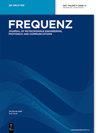通过检查不同的时频表示和数据扩充来提高自动目标识别算法的准确性
IF 1
4区 工程技术
Q4 ENGINEERING, ELECTRICAL & ELECTRONIC
引用次数: 1
摘要
摘要本研究的重点是一种改进的自动目标识别算法,以解决脉冲多普勒雷达对地面运动目标的分类挑战。首先,研究了决策间隔对算法的影响。其次,研究了数据扩充过程的变化。第三,考虑了三种时频信号表示,最后考察了不同深度学习模型对分类问题的使用。事实证明,该算法可以有效地识别公开可用的RadEch数据集中的所有目标,雷达回波为4s。当决策时间仅为1秒时,获得了99.9%的分类概率,这是与该领域其他研究相关的改进。此外,当决策时间减少16倍时,分类精度仅降低1.3%。此外,该算法在另一个包含类似脉冲多普勒雷达地面运动目标的数据集上获得了成功。本文章由计算机程序翻译,如有差异,请以英文原文为准。
Improving the automatic target recognition algorithm’s accuracy through an examination of the different time-frequency representations and data augmentation
Abstract This research focuses on an improved automatic target recognition algorithm for solving the classification challenge of ground-moving targets from pulsed-Doppler radar. First, it was studied how decision-making intervals affect the proposed algorithm. Second, the altering of the data augmentation process was investigated. Third, a consideration of the three time-frequency signal representations and finally the use of different deep learning models for the classification issues were examined. It is proven that the proposed algorithm can efficiently recognize all targets enclosed in the publicly available RadEch dataset, with 4 s of radar echoes. When the decision-making time is only 1 s, a classification probability of 99.9% was obtained, which is an improvement related to the other research studies in this area. Furthermore, when the decision-making time is reduced 16 times the classification accuracy is reduced by only 1.3%. Moreover, the proposed algorithm was successful on another dataset enclosing ground-moving targets from comparable pulsed-Doppler radar.
求助全文
通过发布文献求助,成功后即可免费获取论文全文。
去求助
来源期刊

Frequenz
工程技术-工程:电子与电气
CiteScore
2.40
自引率
18.20%
发文量
81
审稿时长
3 months
期刊介绍:
Frequenz is one of the leading scientific and technological journals covering all aspects of RF-, Microwave-, and THz-Engineering. It is a peer-reviewed, bi-monthly published journal.
Frequenz was first published in 1947 with a circulation of 7000 copies, focusing on telecommunications. Today, the major objective of Frequenz is to highlight current research activities and development efforts in RF-, Microwave-, and THz-Engineering throughout a wide frequency spectrum ranging from radio via microwave up to THz frequencies.
RF-, Microwave-, and THz-Engineering is a very active area of Research & Development as well as of Applications in a wide variety of fields. It has been the key to enabling technologies responsible for phenomenal growth of satellite broadcasting, wireless communications, satellite and terrestrial mobile communications and navigation, high-speed THz communication systems. It will open up new technologies in communications, radar, remote sensing and imaging, in identification and localization as well as in sensors, e.g. for wireless industrial process and environmental monitoring as well as for biomedical sensing.
 求助内容:
求助内容: 应助结果提醒方式:
应助结果提醒方式:


